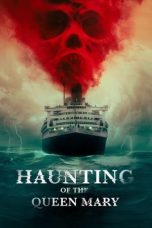- Source: Kingsmill (1798 ship)
Kabayo (2023)
Hotel Transylvania 3: Summer Vacation (2018)
Haunting of the Queen Mary (2023)
The Last Voyage of the Demeter (2023)
In Love and Deep Water (2023)
How to Train Your Dragon: Snoggletog Log (2019)
The Inseparables (2023)
How to Train Your Dragon: Homecoming (2019)
Pirates of the Caribbean: On Stranger Tides (2011)
X-Men (2000)
Frozen (2013)
No More Posts Available.
No more pages to load.
Kingsmill was a French vessel launched in 1793 under a different name, captured in 1798, and sold to British owners who renamed her. She then became a slave ship, making three voyages from Africa to the West Indies in the triangular trade in enslaved people. A French privateer captured her in 1804, but she returned to her owners within the year. In 1807, after the end of British participation in the trans-Atlantic slave trade, Kingsmill became a West Indiaman. In 1814 she became the first ship to trade with India under a license from the British East India Company (EIC) after the EIC lost its monopoly on British trade with India. She was badly damaged in 1821 and subsequently disappears from the registers.
Career
Kingsmill first appeared in Lloyd's Register (LR) in 1798 with T[hohmas] Mullin, master, H[mlet] Mullin, owner, and trade Liverpool—Africa. Her burthen appeared as 310 tons, but that was corrected to 510 tons in the 1799 volume.
Captain Thomas Mullion acquired a letter of marque on 10 May 1798. Because of her size, Kingsmill was rated as having a legal capacity of 560, or 850 slaves.
= 1st voyage transporting enslaved people (1798–1799)
=Mullion sailed Kingsmill to the Bight of Biafra and Gulf of Guinea islands. He sailed from Liverpool on 4 July 1798. In 1798, 160 vessels sailed from English ports, bound for Africa to acquire and transport enslaved people; 149 of these vessels sailed from Liverpool. This was the largest annual number of vessels in the period 1795 to 1804.
On 22 January 1799 Kingsmill was reported to be off the coast of Africa, with destination Dominica. She was still of the coast on 22 January. Kingsmill took her captives to Martinique. By 16 April she was at Martinique with destination Liverpool. She apparently carried 650 captives, the second largest number of all Liverpool slave ships that sailed between 5 January 1798 and 5 January 1799.
By another account, she was at Dominica with 627 captives before sailing on to Martinique. She arrived at Martinique on 16 December 1798. She sailed for Liverpool on 11 March 1799, and arrived back there on 12 April. She had left Liverpool with 82 crew members and had suffered seven crew deaths on her voyage.
= 2nd voyage transporting enslaved people (1799–1801)
=For reasons that are not clear, Mullion acquired a second letter of marque on 10 July 1799. In 1799 he made a second slaving voyage to the Bight of Biafra and Gulf of Guinea islands and then Martinique. On 27 July 1799, she sailed for Africa. In 1799, 156 vessels sailed from English ports, bound for Africa to acquire and transport enslaved people; 134 of these vessels sailed from Liverpool.
By another account, on 24 January 1800, Kingsmill was at Liverpool, with destination the Windward Coast. On 18 April she was still at Liverpool, with destination Bonny (Bight of Biafra).
By 28 November 1800, Kingsmill was at Bonny with destination Martinique. She arrived at Martinique on 21 September 1899, with 433 captives. She left Martinique on 7 January 1801, and arrived at Liverpool on 23 February. She had sailed from Liverpool with 69 crew members and had suffered seven crew deaths on her voyage.
= 3rd voyage transporting enslaved people (1802–1803)
=In 1802 Captain J. Tobin sailed Kingsmill on her third slaving voyage. He too sailed to the Bight of Biafra and Gulf of Guinea islands, but took his captives to the Bahamas. Kingsmill sailed from Liverpool on 15 October 1802. In 1802, 155 vessels sailed from English ports, bound for Africa to acquire and transport enslaved people; 122 of these vessels sailed from Liverpool.
Kingsmill arrived at the Bahamas on 19 April 1803, with 395 captives. She was one of only four vessels to bring enslaved people from the Bight of Biafra to the Bahamas, and all four came from Bonny and arrived in 1802–1803. She arrived back at Liverpool on 6 July 1803. She had left Liverpool with 46 crew members and had suffered two crew deaths on the voyage.
= Capture
=From here on there is a period where Kingmill's history becomes ambiguous. On 27 February 1804, Captain John Moon received a letter of marque. He did not appear in Lloyd's Register or the Register of Shipping, but the Kingsmill of the letter is of 500 tons, and there was only one other contemporary Kingsmill, and she was of 148 tons.
Lloyd's List (LL) reported on 26 June 1804 that the French privateer Buonaparte captured Kingsmill as she was sailing from Liverpool to Barbados and took her into Guadeloupe. Captain Moon was killed in the engagement.
In the table below, columns two through four are from Lloyd's Register, and columns five through seven are from the Register of Shipping.
It is not clear how Kingsmill returned to her owners' hands. The fact that she did suggests that she was recaptured relatively quickly. In 1806 Swann & Co. purchased Kingsmill.
On 17 September 1808 Swann & Co. sold Kingsmill to Humble & Holland. Captain John Hanley acquired a letter of marque on 20 September 1808. The data in the table below is from Lloyd's Register.
Captain John Brown acquired a letter of marque on 8 May 1810. In 1811 John & Robert Gladstone & Co. purchased Kingsmill. (John Gladstone was father of the future Prime Minister William Ewart Gladstone.)
In 1814 Kingsmill became the first vessel to sail to India after the EIC lost its monopoly on trade with India.
She sailed after George Canning wrote on 16 May 1814 to Secretary of the Admiralty John Wilson Croker requesting an exemption for her from the requirement that vessels travel in convoy. She had missed the convoy and Croker argued that Gladstone would suffer a substantial financial loss if she had to await the next convoy. Croker further argued that Kingsmill was well-armed and so would not be vulnerable to attacks from most privateers.
Kingsmill, A. Cassels, master, sailed on 22 May and returned 15 months later with a profitable cargo. Thereafter she traded between Liverpool and Bengal. By 1818 R. M'Dowall had replaced Cassels as master.
Fate
Lloyd's List reported on 9 February 1821 that Kingsmill, Purnell, master, ran aground on the North Bank while sailing from Liverpool to Valparaiso. She was gotten off and taken into King's Dock, where her cargo had to be unloaded as she had sustained much damage. At one point she had four feet of water in her hold, but it was believed that the dry goods were not injured. Kingsmill is not listed after 1821.
Notes
Citations
References
Behrendt, Stephen D. (1990). The Captains in the British Slave Trade from 1785 to 1807. Vol. 140. Transactions of the Historic Society of Lancashire and Cheshire. pp. 79–140.
Chambers, Douglas B., ed. (2014). Runaway Slaves in the Bahama Islands, 1784–1819.
Checkland, S. G. (1954). "John Gladstone as Trader and Planter". The Economic History Review. 7, New Series (2): 216–229. doi:10.2307/2591623. JSTOR 2591623.
Croker, John Wilson, ed. (2012). The Croker Papers: The Correspondence and Diaries of the Late Right Honourable John Wilson Croker, LL.D., F.R.S., Secretary to the Admiralty from 1809 to 1830. Cambridge University Press. ISBN 9781108044585.
Hackman, Rowan (2001). Ships of the East India Company. Gravesend, Kent: World Ship Society. ISBN 0-905617-96-7.
House of Commons, Parliament, Great Britain (1816). Parliamentary Papers. Vol. 10.{{cite book}}: CS1 maint: multiple names: authors list (link)
Knight, John (2006). "Slave Trading: the Triangular Route, 1799-1800" (PDF). BWI Study Circle Bulletin (210): 6–10.
Phillips, Kate (2022). Bought & Sold: Scotland, Jamaica and Slavery. Luath.
Picton, James Allanson, Sir (1875). Memorials of Liverpool, Historical and Topographical: Including a History of the Dock Estate. Vol. 1.{{cite book}}: CS1 maint: multiple names: authors list (link)
Pope, Charles (1819). The Practical Abridgement of the Laws of Customs and Excise ...
Williams, Gomer (1897). History of the Liverpool Privateers and Letters of Marque: With an Account of the Liverpool Slave Trade. W. Heinemann.






























